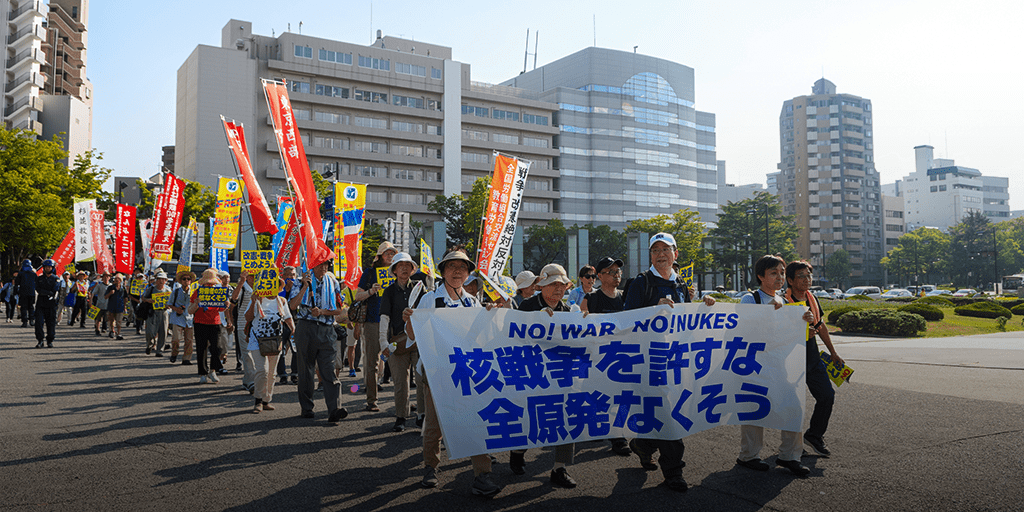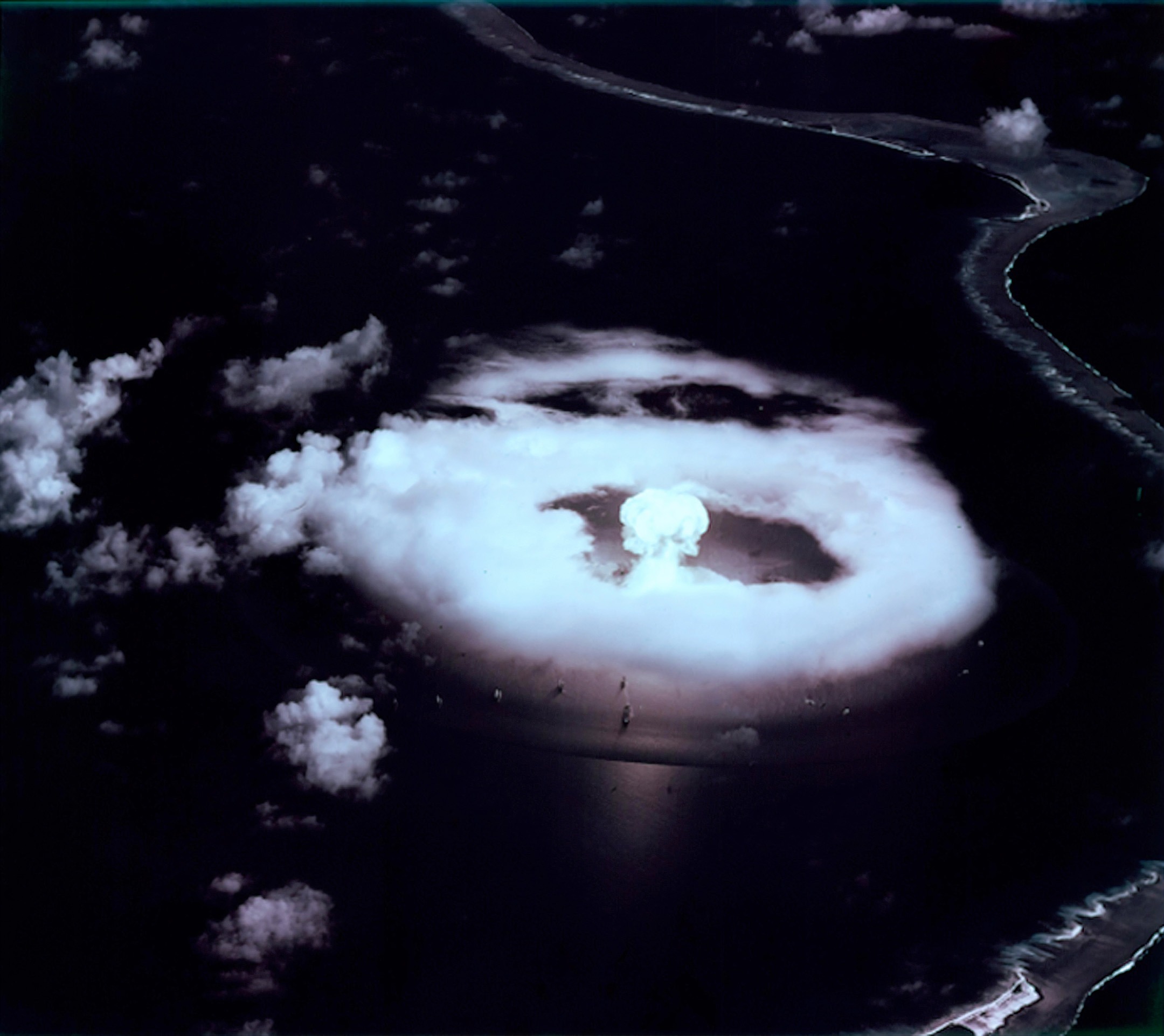TPNW in a Challenging Security Environment
The Treaty for the Prohibition of Nuclear Weapons (TPNW) opened for signature in 2017 and entered into force on 22 January 2021. The TPNW aims to establish a comprehensive ban on nuclear weapons, including their development, deployment, possession, use and threat of use. At the time of writing the TPNW had 62 states parties. A further 27 states have signed but not yet ratified the treaty. By comparison, 122 states voted for the TPNW in 2017, and 191 states (including all the current TPNW parties) are party to the Nuclear Non-Proliferation Treaty (NPT). The first meeting of TPNW states parties is being held in Vienna from 21 to 23 June. This meeting is taking place at a time when global hopes of avoiding nuclear war and eliminating nuclear weapons are facing major setbacks.
The nuclear order is deteriorating
The TPNW arose out of frustration at the ongoing failure of the nuclear-weapon states to meet, or even take seriously, their obligation to pursue nuclear arms reductions and disarmament. The United States and Russia are “modernising” their arsenals, and China is engaging in a substantial – by some estimates three-fold – expansion. Important arms control treaties have lapsed and no talks are taking place on nuclear stability. No action is being taken on major steps to reduce the risk of nuclear war, such as removing nuclear weapons from launch-on-warning status (de-alerting), strengthening national controls on using nuclear weapons, and adopting a “no first use” policy.
Now the world is confronted by Russia’s threat to use nuclear weapons, not for nuclear deterrence but in support of its war of aggression against Ukraine. This highlights that, more than 30 years after the end of the Cold War, nuclear weapons remain an existential threat to the world.
All of this is in marked contradiction to the statement by the nuclear-weapon states in January 2022 that “a nuclear war cannot be won and must never be fought”. The situation demonstrates, on the one hand the urgency of reducing the risk of nuclear war and eliminating nuclear weapons, and on the other, the daunting challenges involved. It might seem that the TPNW is needed more than ever, but as will be discussed, the situation is not that simple.
Nuclear disarmament is a moral and a legal imperative
Nuclear weapons are not just a “bigger and better bomb” – nuclear war would not only cause hundreds of millions of casualties, but could lead to the collapse of civilisation. The consequences could include catastrophic climate change, resulting in global starvation and mass extinctions. The nuclear-armed states – the five nuclear-weapons states recognised by the NPT and the four non-NPT states with nuclear weapons – have a duty to humanity to eliminate these weapons as quickly as possible, and to take immediate steps to reduce the risk of nuclear war.
The International Court of Justice (ICJ), in its 1996 advisory opinion on the use or threat of use of nuclear weapons, could not conceive of nuclear weapons being used in compliance with the principles and rules of international humanitarian law. The ICJ emphasised that any use of nuclear weapons, including in self-defence, must comply with international humanitarian law, something that does not seem possible. The Court declined to rule on the legality of nuclear deterrence, but noted that nuclear retaliation (implicit in nuclear deterrence) must comply with international humanitarian law. The reasoning behind nuclear deterrence is that if it is successful, the case for nuclear retaliation will not arise.
While the ICJ was not asked to rule on the legality of possession of nuclear weapons, from its conclusions one can surmise that possession can only be for the purpose of deterrence but, as discussed, deterrence itself is highly problematic. The Court noted the conundrum between use of nuclear weapons in self-defence and the requirement for any use to comply with international humanitarian law, and concluded this conundrum could be reconciled only by complete nuclear disarmament. The Court emphasised it is a legal obligation for NPT parties to pursue negotiations in good faith leading to nuclear disarmament.
I have argued elsewhere that this ICJ advisory opinion needs to be better known by political leaders, policymakers and the public, and should be acted on by governments.
TPNW considerations
The TPNW adds to action to delegitimise nuclear weapons, and it is very important to do so. TPNW proponents say the treaty has prohibited nuclear weapons, but this is the case only for the TPNW parties. International law does not have a legislative mechanism – a majority of states cannot impose their will on a minority. A treaty binds only those states that accept it.
A treaty can express a norm of customary international law, but the norm in question must first be recognised in customary international law, evidenced by the actual practice of states and their acceptance of that practice as law. Unfortunately, we are nowhere near the point where international practice indicates acceptance of a prohibition of nuclear weapons. What is decisive is the action of those states most relevant to establishing such practice, namely, the nuclear-armed states. The prohibition of nuclear weapons requires that most, if not all, the nuclear-armed states consider a prohibition applies and act accordingly.
The TPNW largely reiterates obligations already accepted by the parties under other treaties, such as the NPT and nuclear-weapon-free zone treaties. A major new element in the TPNW is an implicit prohibition of “nuclear umbrellas,” or extended nuclear deterrence. Effectively this would require a party to avoid any military cooperation that could involve nuclear weapons. This is a key reason why many states have not joined the TPNW. While extended nuclear deterrence involves the moral and legal conundrum discussed above, if deterrence is effective retaliation does not arise. There may be some questions about the reliability of extended nuclear deterrence, but states facing increasingly aggressive attitudes from nuclear-armed states are hardly likely to conclude their security situation will be enhanced by renouncing military alliances.
The best contribution TPNW parties can make is to ensure their actions fully support other relevant treaties to which they are party, particularly the NPT and safeguards agreements, and to support the steps outlined here. As I have written elsewhere, these steps will be required in any event for practical achievement of the TPNW’s objectives.
Conclusions
The dangers evident with increasing international tensions demonstrate the urgency of practical nuclear risk reduction steps. For instance, while in current circumstances nuclear deterrence is thought to be essential for national security, nuclear weapon numbers are far greater than needed for minimum credible deterrence. Further, current practices relating to nuclear weapons, such as maintaining weapons on high alert, inadequate control of launch authority, lack of crisis communication and management mechanisms, and so on, exacerbate rather than reduce the level of danger.
What all states – nuclear-armed states, their allies, and others – should be working towards are practical steps for reducing nuclear risks, reducing nuclear weapon numbers, and building the confidence and trust needed to progress to elimination. NPT parties need to do all they can to impress on the nuclear-weapon states the need to develop substantive actions in these areas, and to be able to assure the upcoming NPT review conference that they are genuinely committed to meeting their arms control and disarmament obligations.
About the Author
John Carlson was formerly Director General of the Australian Safeguards and NonProliferation Office, and founding Chair of the Asia-Pacific Safeguards Network. He is an adviser to APLN, and his other current appointments include Counselor to the Nuclear Threat Initiative (NTI); Nonresident Fellow of the Lowy Institute; member of the Advisory Council of the International Luxembourg Forum; and Associate, Project on Managing the Atom, Belfer Center, Harvard University.
Disclaimer: The opinions articulated above represent the views of the author(s) and do not necessarily reflect the position of the Asia Pacific Leadership Network or any of its members. The APLN’s website is a source of authoritative research and analysis and serves as a platform for debate and discussion among our senior network members, experts and practitioners, as well as the next generation of policymakers, analysts and advocates. Comments and responses can be emailed to apln@apln.network.
Image: Kirsten Margret QUINAIN / APLN.



